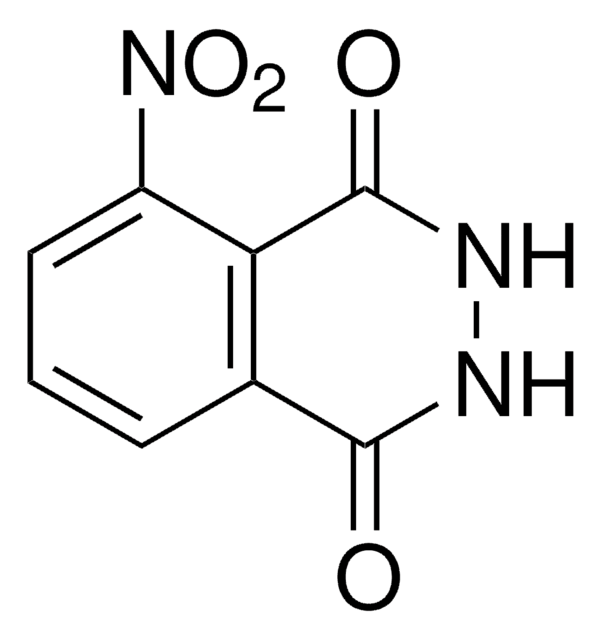Kluczowe dokumenty
About This Item
Polecane produkty
klasa czystości
anhydrous
Poziom jakości
gęstość pary
1 (37 °C, vs air)
ciśnienie pary
10 mmHg ( 30.7 °C)
Próba
98%
Postać
liquid
granice wybuchowości
99.99 %
współczynnik refrakcji
n20/D 1.47 (lit.)
tw
113.5 °C (lit.)
mp
1.4 °C (lit.)
gęstość
1.021 g/mL at 25 °C (lit.)
ciąg SMILES
NN
InChI
1S/H4N2/c1-2/h1-2H2
Klucz InChI
OAKJQQAXSVQMHS-UHFFFAOYSA-N
Szukasz podobnych produktów? Odwiedź Przewodnik dotyczący porównywania produktów
Powiązane kategorie
Opis ogólny
Zastosowanie
- pyridyl aminated O-linked sugar chains from glycoproteins
- nanocomposite of manganese oxide embedded in graphene sheets (GS–Mn3O4)
- formyl hydrazine by reacting with ethyl formate
produkt powiązany
Hasło ostrzegawcze
Danger
Zwroty wskazujące rodzaj zagrożenia
Zwroty wskazujące środki ostrożności
Klasyfikacja zagrożeń
Acute Tox. 2 Inhalation - Acute Tox. 3 Dermal - Acute Tox. 3 Oral - Aquatic Acute 1 - Aquatic Chronic 1 - Carc. 1B - Eye Dam. 1 - Flam. Liq. 3 - Skin Corr. 1B - Skin Sens. 1
Kod klasy składowania
3 - Flammable liquids
Klasa zagrożenia wodnego (WGK)
WGK 3
Temperatura zapłonu (°F)
100.4 °F - closed cup
Temperatura zapłonu (°C)
38 °C - closed cup
Środki ochrony indywidualnej
Faceshields, Gloves, Goggles, type ABEK (EN14387) respirator filter
Wybierz jedną z najnowszych wersji:
Masz już ten produkt?
Dokumenty związane z niedawno zakupionymi produktami zostały zamieszczone w Bibliotece dokumentów.
Klienci oglądali również te produkty
Nasz zespół naukowców ma doświadczenie we wszystkich obszarach badań, w tym w naukach przyrodniczych, materiałoznawstwie, syntezie chemicznej, chromatografii, analityce i wielu innych dziedzinach.
Skontaktuj się z zespołem ds. pomocy technicznej











